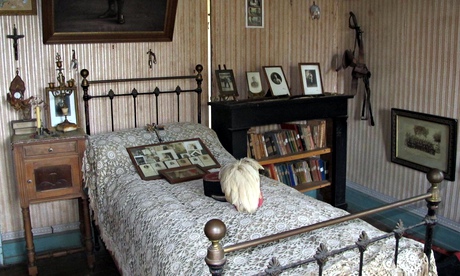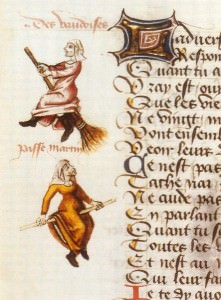![]()
HMS Doris
As aircraft from a coalition of nations take to the air over Syria, it coincides almost exactly with the 100th anniversary of another multi-national air force beginning operations in the same area.
In November 1914 the Ottoman Empire entered the First World War on the side of Germany. For the French, this meant a chance to reiterate their traditional claim for influence in Syria, and looked for an opportunity to deploy military forces to the region. This widening of the conflict was of great concern to the British in Egypt, as it placed a hostile force dangerously close to the Suez Canal, the vital link between Europe and the Far East, and which was being used to pour troops and raw materials into her blossoming war machine. Even while British and Egyptian garrisons were withdrawn from the Sinai Desert (being thought too exposed to attack), the high command in Cairowas looking for means with which to monitor potential Ottoman preparations for an attack on the Canal. The Royal Flying Corps rushed aeroplanes and men to Egypt, but their range was strictly limited and confined to the Sinai Peninsula. What was needed was a longer ranged tool that could monitor troop movements within Syria and Palestine.
The answer proved to be a multi-national scratch force, thrown together from stray resources from across the Mediterranean. The French Navy had a unit of Nieuport Type XH seaplanes in Tunisia, and the British asked for the unit to be loaned to them. The French leapt at the opportunity, and in late November, five Nieuports, five pilots, two observers and 38 ground crew arrived in Egypt to form the Port Said Squadron, under the command of Lieutenant de Vaisseau (Naval Lieutenant) Henri de L’Escaille. As a unit they were short of two things – observers, and ships to transport them. The former were proved by the British Army in Egypt, under whose overall command the operations came. British officers, many of whom had experience either with the Egyptian Survey Department or the Army’s equivalent, were loaned to the French Navy to direct flights and interpret what they found. To get them there, several British warships were seconded for use, although the question of command (i.e. were they being loaned to the British Army, or to the French Naval Air Service, or indeed was the Port Said Squadron being loaned to them) remained a gloriously grey area.
![Return of Seaplane to Mother Ship after flight.]()
A French seaplane being winched abroad HMS Anne after returning from a flight over Palestine or Syria.
To begin with, single Nieuports were placed on board British cruisers whose regular task was to monitor the shores of Syria, Palestine and Arabia. As well as monitoring (and intercepting) shipping and activity in the harbours, they also took advantage of the fact that the main logistical artery between Constantinople and these southern provinces was a railway that ran very close to the Syrian shore. It could be watched – and shelled- with impunity from the sea. The seaplanes now added a further 50 miles or more to the visual range of these ships. The first to embark a seaplane was HMS Doris, which enjoyed an exciting opening few months of the war in patrolling and raiding along the Mediterranean coast. The first seaplane patrol was launched on 10 December 1914, and returned successfully despite being hit by ground fire. Such fire, usually from small arms, was common and, with the jarring and stresses of operating from rough seas, took a toll on the seaplanes. Ground crews were carried to affect repairs where possible, but the aeroplanes usually became too damaged for further use at some point during the ship’s patrols, and would have to be swapped for a fresh one when they put in to Port Said to collect supplies between cruises. Later in December, HMS Minerva joined the effort, launching her seaplane off Aqaba in theRed Sea.
Over the Christmas of 1914 and the early weeks of 1915, these aircraft proved their worth as they monitored the gathering of an Ottoman expeditionary force around Beersheba, far inland. They were also able to warn Cairowhen this force disappeared from their camps and, with the RFC in Egypt, were able to find and track it as it advanced on the Suez Canal. The weeks of warning allowed the British to shore-up the defences on the Canal and prepare the mostly Indian garrison, while also bringing British and French warships in to provide heavy artillery support. Thanks to these efforts, the Battle of the Suez Canalon 3 February 1915 was a bloody defeat for the Ottomans, and ensured the safety of the Canal for the rest of the year.
Victory had not been easy, though. Later in the war Flight Lieutenant G.B. Dacre would record that:
This plan was based on very early experience. On 31 December 1914 an aircraft flown by Quartier-Maître (Quarter Master, QM) Hervé Grall had crashed 30 km inland on a mission to Aqaba. The observer, Captain Stirling of the Royal Dublin Fusiliers, was uninjured, while Grall was badly shaken and shocked. Grall insisted that Stirling leave him behind and walk to the coast as quickly as possible, to where their ship, HMS Minerva, was waiting, and bring back help. Grall then followed at a slower pace. Stirling made it, and did bring back help, but Grall mistook the party for an Ottoman patrol and hid from it. He later made it to the coast and was picked up safely. Grall received the Médaille Militaire for his actions, and would go on to be decorated, and crash, several more times. Less fortunate were the crew of a second Nieuport that crashed into the Sinai on 27 January 1915. QM Jean-Marie Le Gall and Lieutenant Partridge, Indian Army, walked out of the desert only to be shot dead the following day by Gurkhas guarding the Suez Canal.
![]()
The multinational crew of the Aenne Rickmers, later formally acquired by the Royal Navy as HMS Anne.
Reinforcements arrived in early January, and continued to trickle in. Apart from new seaplanes and crews, rudimentary bombs, flachettes (darts to be dropped on targets from above) and wireless sets also arrived. The bombs were small and only one or two could be carried without overloading the aircraft, although the wireless sets, surprisingly, proved to be far more effective than advertised. With ranges of up to 50 miles, reports could now be sent back in real-time, and ‘spotting’ for the guns of the cruisers was also made much easier. Up until then, coloured smoke bombs were used to direct naval gun fire, but now a much wider and more subtle range of codes could be used to pinpoint targets.
Perhaps the most impressive reinforcements were two new ships, both requisitioned German merchant steamers. The Aenne Rickmers and the Rabenfels had mostly Greek or Cypriot crews. The Royal Navy provided officers and senior NCOs, and a small party of Royal Marines and sailors for self-protection. The Aenne Rickmers came under the command of Captain L. B. Weldon of the Royal Dublin Fusiliers, while the Rabenfels was commanded by Captain R. E. Todd of the Royal Army Medical Corps. Neither ship received much in the way of conversion, and both could only carry two seaplanes. They operated under the British Merchant flag until late 1915, when they were commissioned into the Royal Navy as HMS Anne and HMS Raven II.
This hotch-potch, multi-national and indeed multi-service organisation carried on for a further year, monitoring movements and mapping Ottoman defences in Syria, Palestine and Arabia. Only in early 1916 could the Royal Navy spare the resources to take over this important task, partly due to the ending of the Gallipoli campaign. Ships specially converted as seaplane carriers began to arrive in January 1916, as did Royal Naval Air Service aircraft and crews, to form the East Indiesand Egypt Seaplane Squadron. The Port Said Squadron slowly handed over its responsibilities until it sailed back to Francein April 1916. HMS Anne and HMS Raven II remained with the East Indies and Egypt Naval Squadron until August 1917, when they were released back into the merchant service.
![]()
Stuart Hadaway has spent eight years working with regimental mumseums around the UK, including as curator of the RAF Museum, before joining the Air Historical Branch (RAF) as a researcher for the official historians of the RAF. He is the author of Pyramids and Fleshpots, which tells the true story of the experiences and achievements of British military personnel serving in Egypt in the First World War fighting a determined enemy to protect the Suez Canal – the lifeline of the Empire.





















































































